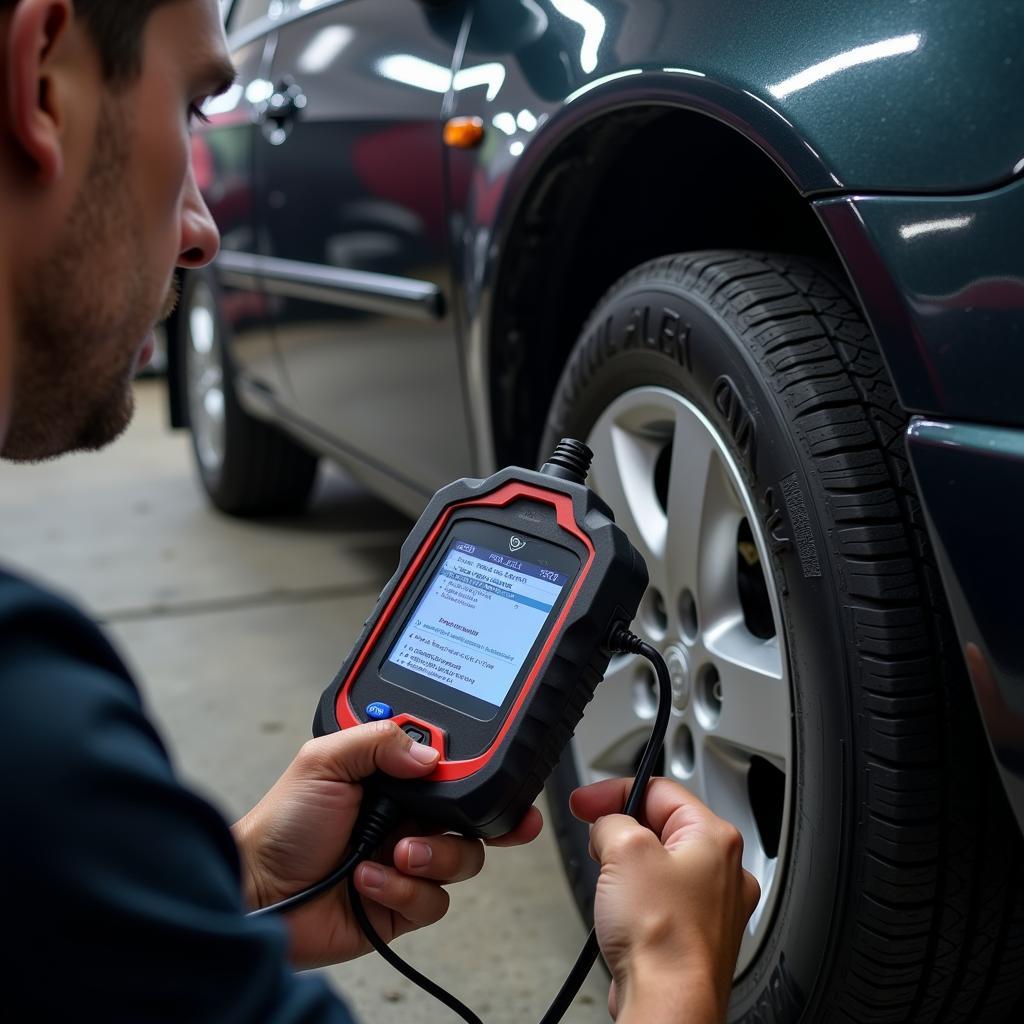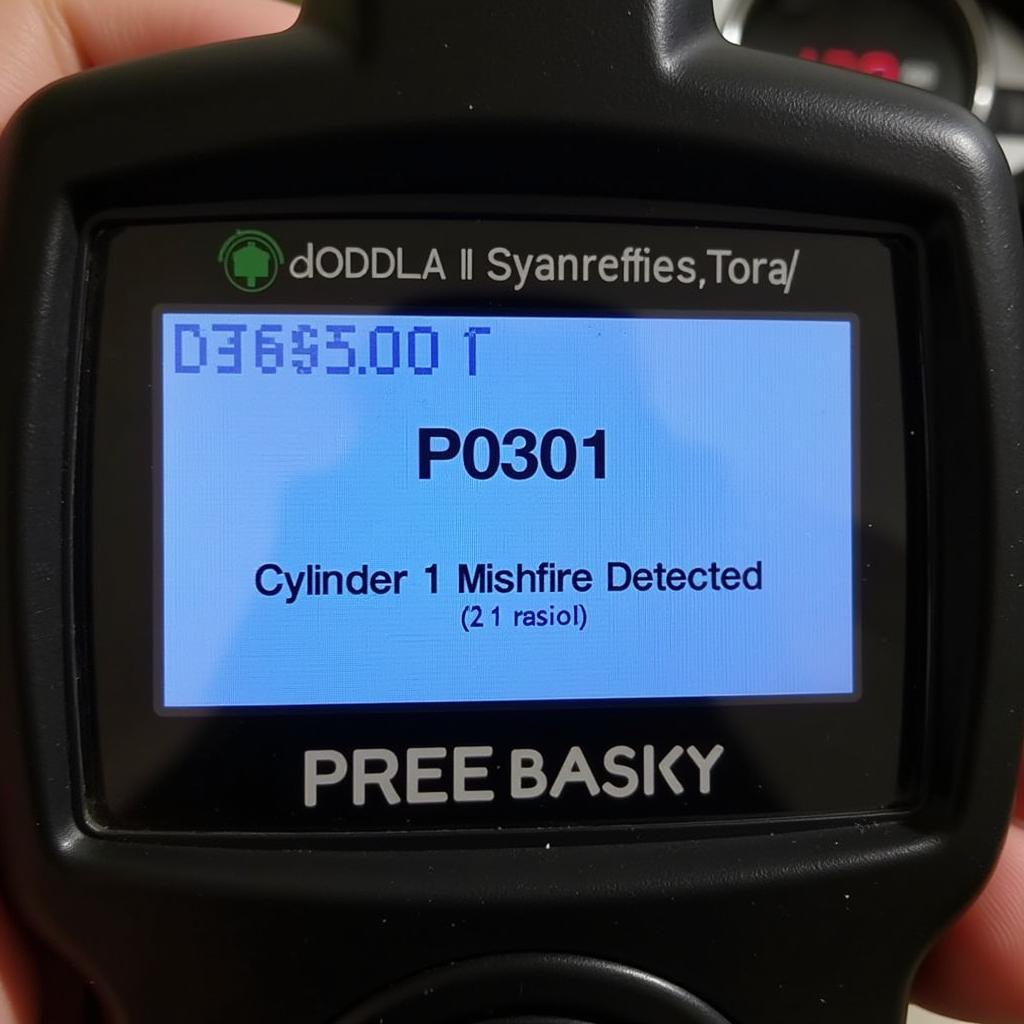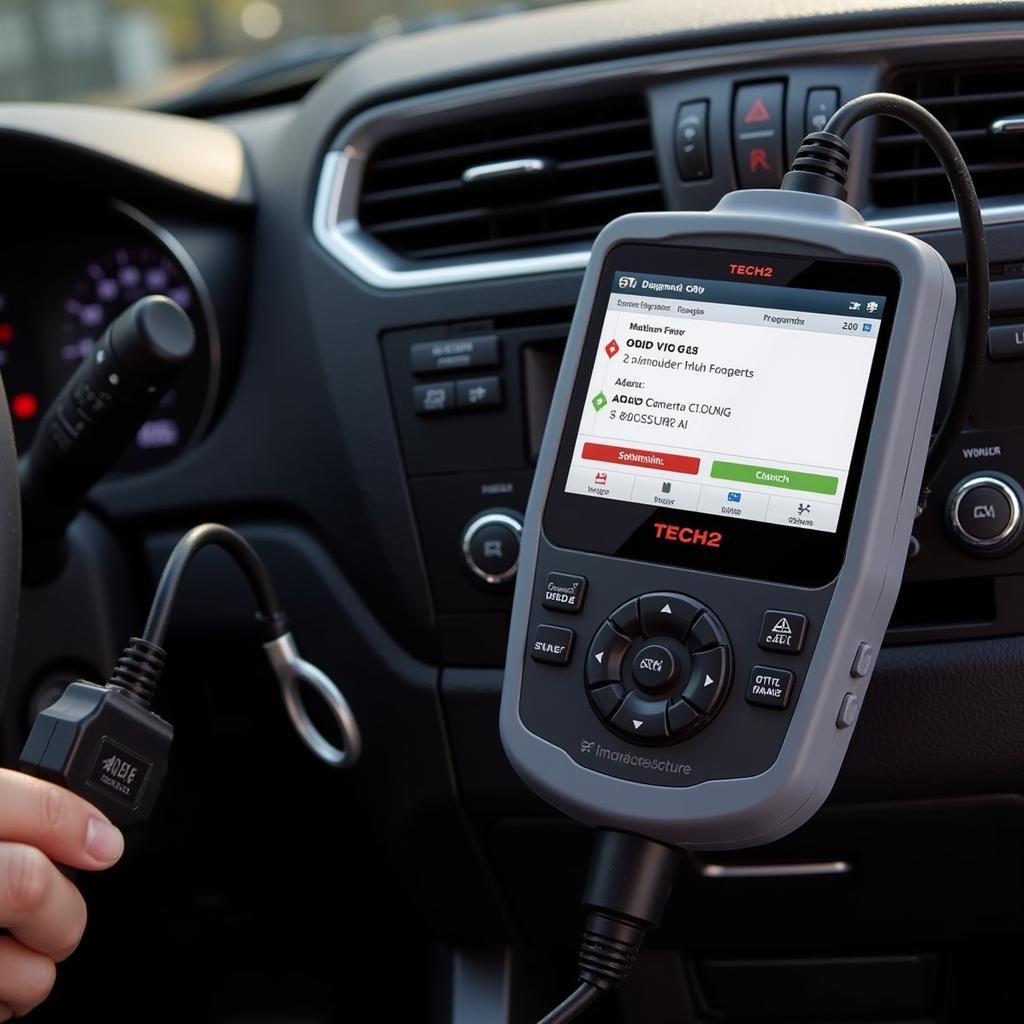Modern vehicles are complex machines, relying heavily on intricate electronic systems for optimal performance. When issues arise, pinpointing the source of the problem often requires specialized equipment and knowledge. This is where Diagnostic Tool Codes come into play. These codes, presented as alphanumeric sequences, act as a language, conveying vital information about your car’s health to technicians and informed car owners.
 Car Diagnostic Tool
Car Diagnostic Tool
Deciphering the Language of Your Car
Diagnostic tool codes, also known as Diagnostic Trouble Codes (DTCs), are standardized across most vehicles sold in the United States since 1996. This standardization stems from the implementation of the On-Board Diagnostics II (OBD-II) system, mandated by the Environmental Protection Agency (EPA).
When your car’s ECU (Engine Control Unit), often referred to as the car’s brain, detects a malfunction within a system, it logs a corresponding DTC. These codes can range from issues with the engine and transmission to problems with the airbag system or even the infotainment display.
What Do Diagnostic Tool Codes Look Like?
A typical OBD-II DTC consists of five characters:
- The first character: This is always a letter, indicating the system where the fault originates:
- P: Powertrain (Engine, Transmission, Emissions)
- B: Body (Airbags, Power Seats, Central Locking)
- C: Chassis (ABS, Traction Control, Suspension)
- U: Network & Communication (CAN Bus, Modules)
- The second character: This is a number, specifying whether the code is generic (0) or manufacturer-specific (1-3).
- The third character: Another number (0-9), pinpointing the specific system or sub-system affected.
- The fourth and fifth characters: These two numbers (00-99) identify the particular fault within that system.
For example, the code P0301 translates to:
- P: Powertrain
- 0: Generic code
- 3: Ignition system or misfire
- 01: Cylinder 1 misfire detected
 OBD-II Scanner Display
OBD-II Scanner Display
The Importance of Accurate Interpretation
While accessing and understanding basic DTCs can be done with affordable [e38 diagnostic tool], professional-grade [domain diagnostic tools] provide more detailed information.
It’s crucial to remember that DTCs are not a diagnosis in themselves but rather indicators of potential problems. For instance, a “P0171 System Too Lean” code doesn’t necessarily mean a faulty oxygen sensor. It could point to a vacuum leak, a faulty fuel injector, or even a problem with the fuel pressure regulator.
“Using diagnostic tool codes effectively is like understanding your car’s language,” says John Miller, a senior automotive diagnostician at ScanToolUS. “It helps you ask the right questions and perform targeted troubleshooting instead of blindly replacing parts.”
Beyond Code Reading: Further Diagnostics
Once you have retrieved the DTCs, the next step involves further investigation. This might include:
- Visual inspection: Checking for loose connections, damaged wiring, or other visible signs of damage.
- Testing with a multimeter: Measuring voltage, resistance, and continuity to identify faulty sensors or actuators.
- Using specialized diagnostic equipment: Such as oscilloscopes and pressure gauges to analyze system performance in real-time.
 Engine Inspection
Engine Inspection
Resources and Assistance
Dealing with diagnostic tool codes can be daunting, especially for car owners unfamiliar with automotive technology. Here are some resources that can help:
- Owner’s Manual: Your car’s manual often contains a section dedicated to explaining DTCs.
- Online Forums and Communities: Numerous online platforms are dedicated to specific car makes and models, offering valuable insights from experienced owners and mechanics.
- Professional Diagnostic Services: If you are unsure about interpreting the codes or performing the necessary repairs, it’s always best to consult with a qualified mechanic.
For professional-grade diagnostic tools and expert advice, contact ScanToolUS at +1 (641) 206-8880 or visit our office at 1615 S Laramie Ave, Cicero, IL 60804, USA. Our team of specialists is ready to assist you with all your automotive diagnostic needs.
Conclusion
Understanding diagnostic tool codes empowers car owners and technicians to diagnose and address car problems effectively. While modern vehicles are increasingly complex, the ability to “speak their language” through DTCs provides a starting point for efficient troubleshooting and repair. Remember, while DIY diagnostics can be helpful, seeking professional assistance is always recommended for complex issues or when in doubt.


